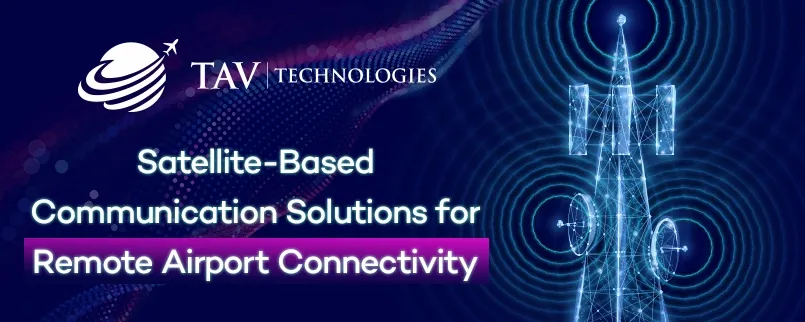
Aug 2024
Airports face unique challenges in maintaining seamless communication and connectivity while linking various regions. Satellite-based communication solutions offer an effective means to ease connectivity challenges, providing reliable solutions.
The Need for Remote Airport Connectivity
Remote airports are those located in geographically isolated or underserved regions, often far from major urban centers. These airports can be situated on islands, in mountainous areas, or in sparsely populated territories. They often struggle with connectivity due to their isolation.. Traditional infrastructure like fiber optics or terrestrial networks can be impractical or prohibitively expensive. This lack of connectivity can impact crucial operations, from air traffic control to passenger services, and overall airport efficiency and safety.
How Satellite-Based Communication Works
Satellite communication utilizes satellites orbiting the Earth to deliver internet and communication services. These satellites transmit signals to ground stations, which relay them to remote airports, bypassing the need for extensive ground infrastructure.
Geostationary satellites provide stable coverage from a fixed point above the Earth. Low Earth Orbit (LEO) satellites, positioned closer to Earth, offer lower latency and higher data speeds, which are crucial for real-time applications. Ground stations, equipped with large antennas, handle the transmission and reception of these signals.
Benefits of Satellite-Based Communication for Airports
Satellite communication ensures consistent and reliable connectivity, crucial for remote airports. It guarantees that essential communications, such as air traffic control instructions, weather updates, and emergency notifications, remain accessible.
This technology enhances safety by facilitating real-time monitoring and communication, reducing the risk of incidents and improving operational efficiency. It is also cost-effective compared to laying extensive terrestrial infrastructure, making it an attractive option for airports with limited budgets.
Additionally, satellite systems are scalable, allowing airports to expand capacity as passenger traffic and operational needs increase. The global coverage provided by satellite networks ensures that even the most isolated airports are connected, which is especially important for remote regions.
Applications in Remote Airport Operations
Satellite communication plays a vital role in various aspects of remote airport operations. It supports air traffic control by ensuring continuous communication between controllers and aircraft. It enhances the passenger experience through reliable internet services, including Wi-Fi and real-time flight updates.
For operational tasks like baggage handling, security, and maintenance, satellite communication enables seamless coordination across departments. In emergencies, it provides crucial connectivity for swift response and management.
Future Prospects and Innovations
The future of satellite-based communication in aviation looks promising, with ongoing advancements improving capabilities. Innovations such as high-throughput satellites (HTS) and LEO satellite constellations are expected to deliver higher data speeds, lower latency, and increased capacity. These advancements will solidify satellite communication as a key component of remote airport connectivity, ensuring even the most isolated airports remain well-connected.
